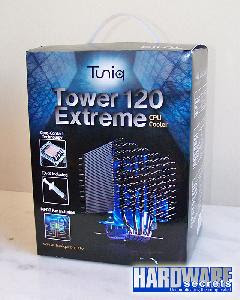
On one hand, I’m a little surprised that USB 3.0 didn’t arrive on the new MacBook Pros announced this week. We may see it on the next iMacs and Mac Pros—unless Apple makes one of its quantum leaps and goes directly to “Light Peak.”
According to a recent Research and Markets study, the market for digital interface technologies continues growing, and includes USB, 1394, DVI, HDMI, and Bluetooth, among others. USB is the most common and most-used interface among both home and work computer users, according to the research grouop. .
Research and Market’s 21-question survey tracked the ownership of seven interface technologies among In-Stat’s Technology Adoption Panel in both work and home PCs: USB, 1394 (FireWire to Mac users), DVI, HDMI, Bluetooth, DisplayPort, and eSATA. It also queried 1,216 tech-savvy, predominantly male, online respondents about what they connected their computers to using these connections, including peripherals, consumer electronics, and mobile devices.
The survey found that, not surprisingly, USB is the most common interface on both work and home computers. Other common interfaces include DisplayPort, DVI, HDMI, Bluetooth, eSATA, and 1394. USB Flash cards are the most commonly connected peripherals.
However, just because an interface is common, doesn’t mean it’s widely used, says Brian ORourke, In-Stat analyst, says that FireWire1394 was the second most common interface, but is rarely used. HDMI is a less common home computer interface. However, among those with HDMI, a large percentage connect the computer’s HDMI port to their digital television.
DisplayPort, one of the newer PC interface technologies, has achieved surprising popularity since its release. DisplayPort was on 27% of survey respondents work computers and 24% of their home PCs.
According to the In-Stat research group more than three billion USB-enabled devices are currently being shipped. USB 3.0 is specified to transfer at five gigabits per second, or 10 times faster than USB 2.0. Plus, USB 3.0 products are backward-compatible with USB 2.0 devices and will interoperate with them, as well, so there’s no reason for Apple not to include USB 3.0 on upcoming Macs.
As for FireWire, I’m not willing to bet on its inclusion on any Macs beyond the Mac Pro and 15-inch and 17-inch MacBook Pro. Although it could survive on the 27-inch iMac, which has to be considered, by any criteria, a prosumer machine, if not a professional machine. As for FireWire on the 13-inch MacBook Pro, the MacBook and the Mac mini, I wouldn’t count on it since USB is more popular and cheaper.
Apple invented FireWire, but FireWire 400 has disappeared from the latest Macs—though FireWire 800 connectivity has taken its place for the most part. If Apple does continue its FireWire support, it could move up to FireWire 3200. FW 3200 FireWire 3200 will use the same connectors as FireWire 800, but purportedly delivers at least four times the performance. It increases FireWire speed from 800 Mbps to 3.2 Gbps. You’ll notice that, on paper, that’s slower than USB 3.0, but FireWire also has advantages in areas such as power management.
FireWire 800 products today deliver 90 MB/second of sustainable throughput. With the anticipated three percent overhead, FireWire 3200 could deliver nearly 390 MB/second of usable data bandwidth, though a straight-forward 400 percent increase would be 360 MB/second. That’s enough to drive full 1920×1200 HDTV signals at up to 50 fps.
Of course, there’s no reason computers can’t have both FireWire and USB 3.0 ports. That may be what Apple has lined up for at least most of its upcoming Macs. But if, in time, USB 3.0 crushes FireWire—and also eSATA—don’t be surprised.
On the other hand, USB 3.0 could disappear and be replaced by a technology called “Light Peak.” Developed by Intel and championed by Apple, this proposed technology paves the way for a new generation of extreme computer input and output (I/O) performance, delivering 10Gb/s of bandwidth, with the potential ability to scale to 100Gbs over the next decade, according to David Perlmutter, executive vice president and general manager, Intel Architecture Group. At 10Gb/second, a user could purportedly transfer a full-length Blu-Ray movie in less than 30 seconds.
Intel says it intends to work with the industry to determine the best way to make this new technology a standard. There are rumors that Apple will introduce Light Speed on Macs in fall 2010 in a line of computers Macs destined for back-to-school shoppers. Following the initial launch, there are plans to roll out a low-power variation in 2011, which could lead to more widespread adoption in handhelds and cellphones, according to an engadget report. The plans from October 2007 show a roadmap that includes Light Peak being introduced to the iPhone iPod platform to serve as a gateway for multimedia and networking outputs, the article adds.
When it does, it could make both USB and FireWire obsolete, though that won’t happen for some ways down the technology road.
However, Intel says there’s no conflict between USB 3.0 and Light Peak. The company sees Light Peak and USB 3.0 as complementary, as Light Peak enables USB and other protocols to run together on a single, longer cable and at higher speeds in the future. So both may exist together in the market and perhaps on the same platform at the same time.
As for FireWire, well, if you’re a fan, keep your fingers crossed.


















